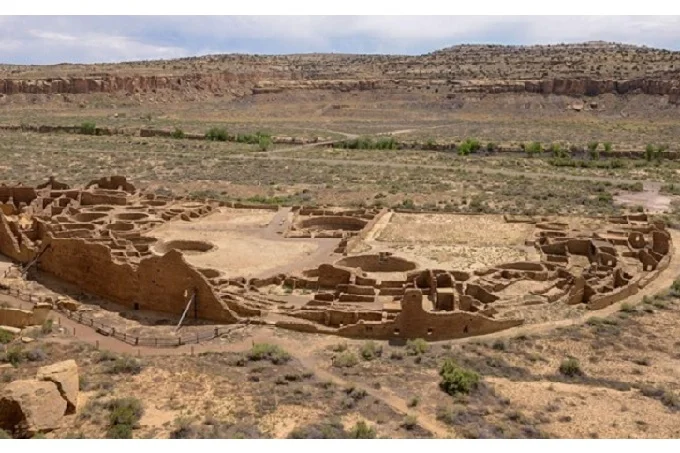Chaco culture: When women controlled power in North America

North American members of the Chaco culture likely lived in a matrilineal society where social status and power were passed down through the maternal line. Scientists came to this conclusion after studying the DNA of dead people buried in one of America’s largest ancient tombs.
Deep inside the 650-room burial ground in Chaco Canyon, New Mexico, is the richest tomb in the southwestern United States: it contains the body of a 40-year-old man, surrounded by rare shells, beads, and pendants numbering more than 11,000.
With no written sources, researchers have long puzzled over how the 1,000-year-old Chaco culture was organized. Using DNA from the bones of the deceased and 13 people buried with them, scientists have come to a surprising conclusion: elite status was passed down through the maternal line, from mothers to their sons and daughters.
Most societies of the ancient world were patrilineal, that is, status and leadership positions were passed down through the paternal line. There are exceptions, for example, the matrilineal Lycia in ancient Turkey. We cannot say that women ruled such societies, but they definitely played a big role and greatly influenced the community’s whole life.
Scholars have long debated exactly what type of society the Chaco culture, which built multi-story houses and for a long time held the largest position in North America, had.
To see if genetics could shed some light on the question, a team led by archaeologist Douglas Kenneth of the University of Pennsylvania analyzed remains found in Room 33 of the Pablo Bonito complex, now preserved at the American Museum of Natural History, using DNA sequencing.
First, the team determined the order in which the bodies were buried using radiocarbon analysis. The oldest bodies turned out to be those dating back to 800 A.D., and the most recent were those dating back to about 1130 A.D. After that, the team studied the mitochondrial DNA of the dead bodies and found that nine of them are maternally related. The scientists report their discovery in a paper published in Nature Communications. Enough nuclear DNA preserved in the bodies also showed a mother-daughter relationship between two people and a grandmother-grandson relationship between two others.
“The fact that they are all buried in the same crypt and share the same mitochondrial DNA indicates that there is definitely a maternal relationship between them,” Kennett says. “The level of the crypt and the richness of the burial also serves as an indication that they were the elite of society.”
Scientists are generally positive about their colleagues’ discovery, although it is possible that the crypt under study belongs simply to one influential family, whose overall structure may not have extended to the rest of the Chaco culture. In any case, archaeologists and geneticists are now busy investigating the rest of the burials in an attempt to confirm or refute their hypothesis.




